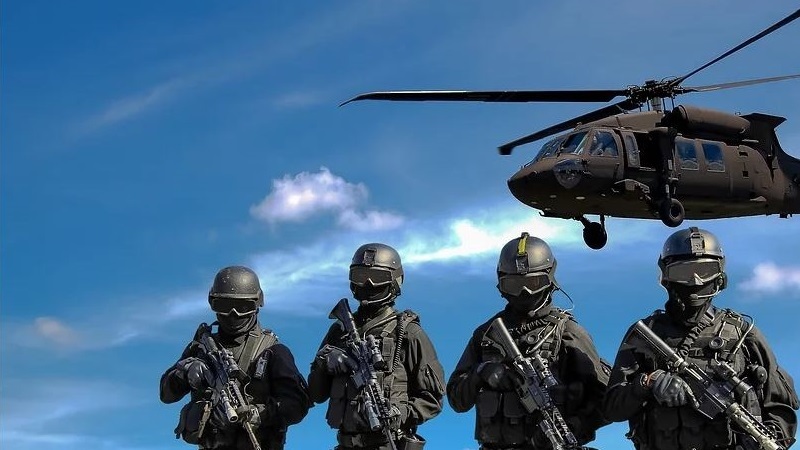Some believe the police have become too militarized due to federal funding for military-style equipment. | Pixabay
Some believe the police have become too militarized due to federal funding for military-style equipment. | Pixabay
A debate is growing over whether police should have military equipment, including tank-track-type armored vehicles as a means of law enforcement, or whether as critics contend, it’s dangerous to turn police into pseudo-soldiers.
“A lot of the reasons that we’re seeing what we’re seeing [with police brutality] is because police feel that they’re superior over an average citizen. That mindset alone is very dangerous in society,” Trische' Duckworth, a member of the advocacy group Survivors Speak, told Bridge Michigan. “Couple that with giving them a military weapon — it’s just not a good look.”
Called “police paramilitary” equipment, the Bridge Michigan report said such gear is acquired by police agencies through grants and federal programs that, in one case, sent $7 billion to 8,000 police agencies across the country. Of that amount, $45.8 million has gone to 273 police departments in Michigan.
The gear includes riot shields, armored vehicles, some that operate on tank tracks instead of wheels, unmanned robot vehicles that are remote-controlled, armored trucks, and semi- or fully automatic rifles.
The Michigan State Police received three helicopters worth an approximate $2 million, while two helicopters worth $300,000 went to police in Detroit.
Other gear acquired through the program includes weatherproof blankets, military-style boots, radio equipment, computers, office equipment, cots and furniture.
A political science professor at the University of Michigan who has studied the military-type acquisitions, Kenneth Lowande, said it is a small portion of the gear that has led critics to contend that the police are becoming “militarized.”
“The federal program likely contributes to militarization, but it contributes to a lot of other things, too. It’s sort of like a Goodwill for police departments,” Lowande said, according to Bridge Michigan.
The report said most of the items are not heavy weaponry, such as ponchos, jackets, flashlights, bandages, cots, binoculars, Taser stun guns, rifles, pistols and trucks.
Oakland County Sheriff Michael Bouchard told Bridge Michigan that his department has acquired an armored mine-proof vehicle, but it has only been used a few times to transport officers during active-shooter situations.
In the city of Niles, Police Chief James Millin said his armored vehicle was used once in a neighboring county to help deal with a barricaded shooter situation.
“We proudly and gladly say that we have not had cause to use it that often, but that doesn’t make it any less important,” Millin told Bridge Michigan. “So the people that say you can’t really justify it… I disagree. If it gives us the ability to save one person’s life, then it’s well worth the money. Which to the City of Niles is nothing.”
However, Tristan Taylor, a leader of Detroit protests against racism and police brutality, said military-style equipment is being used too often to maintain peace.
"Not just against protesters, but in a heavy-handed way against people who have minor offenses,” Taylor told Bridge Michigan. “It’s striking to me how much patience police can give to white people even when they’re holding hostages, than Black and brown people that they just pull over for a random traffic stop.”
Taylor added that too often police use military gear so they can say to those who dare challenge their authority, “Our guns are bigger.”


 Alerts Sign-up
Alerts Sign-up